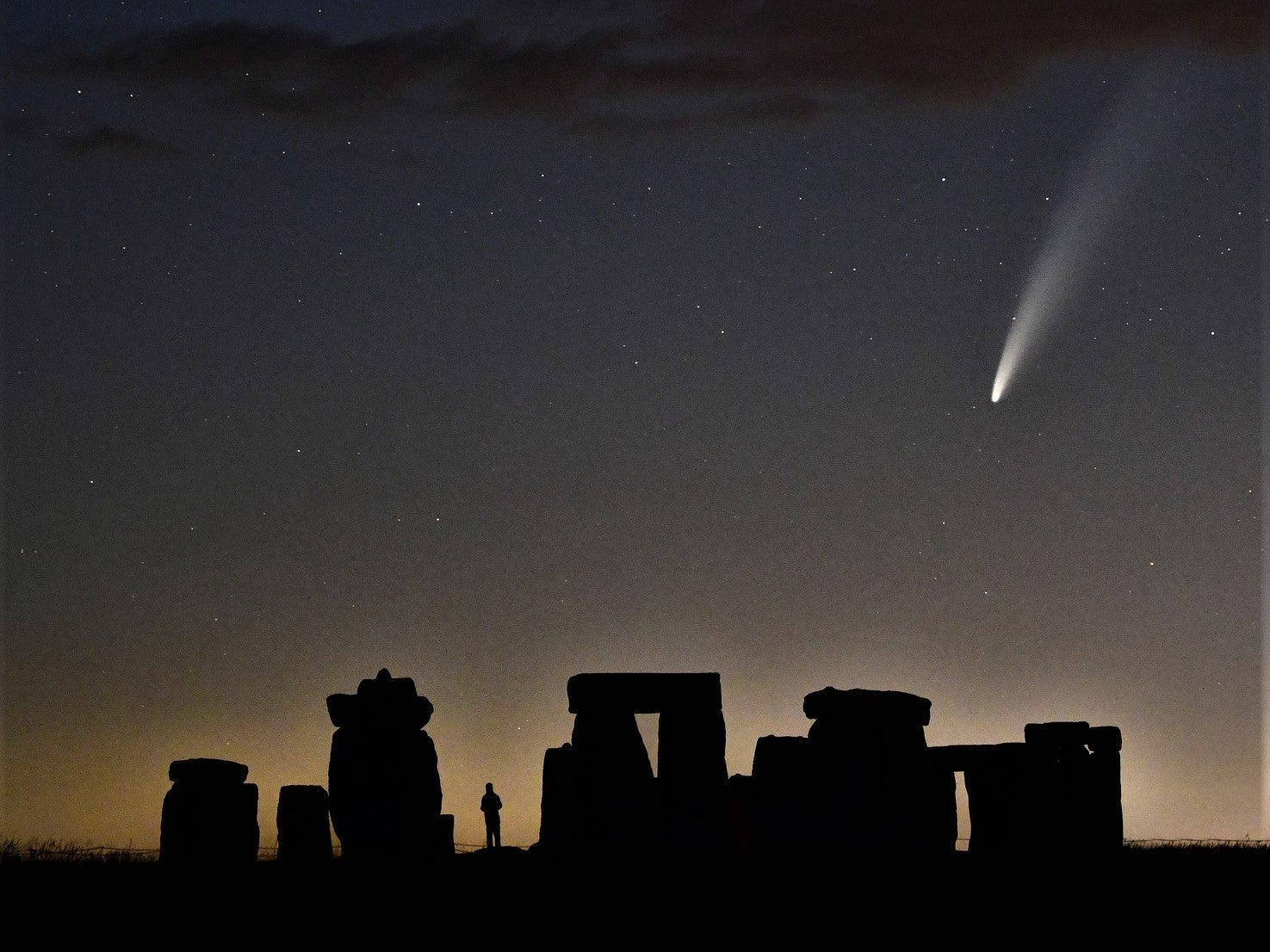Winter Solstice 2020 will see Ursid meteor shower coincide with ‘Christmas star’
Two rare astronomical events to take place on the longest night of the year

The 2020 winter solstice will see the peak of a meteor shower coincide with an extremely rare conjunction of Jupiter and Saturn.
The occurrence of the two astronomical events on the longest night of the year offers an unrivalled opportunity for star gazers to witness them – weather permitting.
On 21 December, the Ursid meteor shower will see up to 10 ‘shooting stars’ burst from the blackness each hour from the northeast direction of the sky where the North Star appears. It will be the final meteor shower of 2020.
In a different part of the night’s sky, Jupiter and Saturn will appear just 0.1 degree apart – roughly equivalent to one fifth of the moon’s diameter.
The convergence of the two gas giants, known as the Great Conjunction, will be the closest the two planets have appeared together since 1623. Both planets will appear to the naked eye as a single bright entity, leading some to refer to it as a ‘Christmas Star’ due to its timing.
Jupiter and Saturn converge roughly every 20 years but it is purely coincidental that it should take place on this date.
“Conjunctions like this could happen on any day of the year, depending on where the planets are in their orbit,” said Henry Throop, astronomer in the Planetary Science Division at Nasa.
“The date of the conjunction is determined by the positions of Jupiter, Saturn, and the Earth in their paths around the Sun, while the date of the solstice is determined by the tilt of Earth’s axis. The solstice is the longest night of the year, so this rare coincidence will give people a great chance to go outside and see the solar system.”
The two planets will appear just above the horizon to the southwest shortly after sunset. Shortly after they will both set out of view.
Current forecasts from the UK Met Office suggest views of the two celestial occurrences may be obscured for many by clouds.
The five day forecast states: “Rain clearing east early on Saturday leaving bright spells and blustery showers over the weekend, wettest in western areas. Chilly on Sunday night before cloud and rain arrives for Monday.”
Subscribe to Independent Premium to bookmark this article
Want to bookmark your favourite articles and stories to read or reference later? Start your Independent Premium subscription today.

Join our commenting forum
Join thought-provoking conversations, follow other Independent readers and see their replies